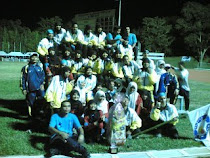A recent workshop in Geneva - The Fully Networked Car, A Workshop on ICT in Vehicles - looked at the synergy between the worlds of information and communications technologies (ICT) and vehicles.
A key focus of the event was standardization that will aid the development of an array of exciting new technologies, mostly aimed at improving road safety. One session concentrated in particular on the way that collaboration between all stakeholders - suppliers of communications, vehicles, infrastructure and applications/services, standards developers - will impact this technology.
Until recently there has been no concerted effort to bring the two industries together to forge standards for this new generation of technologies aiming to facilitate the ‘fully networked car’.
The kind of applications that we can expect from the fully networked car include; the ability of a car to dial the emergency services automatically in a crash or other emergency situation (known as eCall), communications to warn of dangerous situations and remote diagnostics if your car breaks down.
Telematics – the use of computers to control or monitor remote devices or systems using telecommunications or wireless technologies - is combined with the term intelligent transportation systems (ITS) to form the term most often used to describe these technologies – ITS Telematics.
Many key players now believe that without standards the market for ITS Telematics will not take-off.
The ICT sector has seen great successes in terms of standardization. If it wasn’t for standards in telecommunications it would be impossible to call from country to country or even network to network. Ensuring that equipment works together and that service providers can avoid being locked-in to one supplier are key concerns for telecoms providers. Standards have succeeded in ramping up levels of interoperability in telecoms networks enabling a raft of innovative services, while allowing service providers to implement best-of-breed solutions, keeping costs down and customers happy. And ITU-T as well as being the key architect of the world’s telecommunication networks has been behind many recent initiatives to bring other standards makers together to avoid duplicating effort.
In the car world hundreds of standards focus on areas as diverse as tyre pressure and impact testing, to the human machine interfaces (HMI) that control various car functions. ISO Technical Committee 22 (TC22) creates international standards for all in-vehicle aspects of road vehicles. ISO Technical Committee 204 (TC204) creates international standards for when a vehicle interacts with infrastructure or other vehicles. The car industry has seen various initiatives to harmonize global standards in the past including the bi-annual Global Automotive Standards Summit. Additionally, the World Forum for Harmonization of Vehicle Regulations was established within the UN system to harmonize vehicle regulations.
Now, an initiative to facilitate better communications between the ICT and car manufacturing worlds has been created. The Advisory Panel for Standards Cooperation on Telecommunications related to Motor Vehicles (APSC TELEMOV) was formed following the first ITU workshop on this topic in 2003. The group brings together leading international standardization organizations to understand what is done in other standards bodies and to share information. These standards makers hail from all stakeholders in the telematics world; telecoms service providers, car manufacturers, telecoms equipment manufacturers, systems manufacturers and governments etc. In this way duplication of effort can be avoided and open issues in standardization can be identified easily.
Sidebar
Objectives of the Advisory Panel for Standards Cooperation on Telecommunications related to Motor Vehicles (APSC TELEMOV)
* The APSC is a cooperation group on all aspects of standardization related to telecommunications within and for motor vehicles.
* The APSC should strengthen the cooperation amongst the SDOs involved in the industry, improving information exchange between organizations and avoiding duplication of efforts.
* The APSC should identify open issues in standardization activities and stimulate cooperation on how and where to best address those open issues.
* The APSC should facilitate coordination, as far as possible, for the aspects involving responsible bodies within different organizations.
* The APSC shall focus on technical aspects taking into consideration, as far as possible, regulatory, economic, usability and sociologic issues.
* The APSC shall support activities to increase awareness and application of the existing standards.
* The APSC will not have the power of decision but may prepare proposals and on request provide advices for SDOs and relevant partners.
This type of activity is seen as fundamental. During his presentation, ITU, a potential partner for ICT in vehicles, at the Geneva workshop, Jean-Yves Monfort, ITU-T Study Group 12 Chairman noted that, deregulation and the rise of the Internet has led to 500 plus standards organizations operating in the ICT field. He says: “What we are seeing with the formation of APSC is a new spirit of collaboration between standards development organizations (SDOs). And hopefully what this will lead to is a more timely delivery of standards in order to better meet industry needs. I have a strong belief that this mutually supporting standards environment will lead to a world where seamless mobility and the connected vehicle are a reality.”
Bob Williams, Convenor of two working groups in ISO, and also chair of the ETSI ITS Task Group, echoed the sentiment saying that he believes that the use of common resources helps to ensure that interested parties are well informed about work in progress and coordinate the timely development of the various deliverables.
Richard Noens, Director Corporate Telematics Standards, Motorola, delivered a presentation at the workshop, Opportunities and Necessities for Standards in the Telematics Value Chain. Noens used to work on proprietary standards. He has now by his own admission realized the ‘error of his ways’.
“Standards are necessary because of increased complexity”, he said. “They are necessary if the market is to grow.” Additionally he believes that it is critical to focus on applications independent of what is beneath them, ‘pipe-independent applications’ that are developed regardless of what network architecture is used, Bluetooth, WLAN, UWB, WiMax, DSRC, cellular etc, and make them useful, low cost and high reliability. “There is no point in developing technology for technology’s sake”, he said.
All participants in the value chain have to benefit and to take part according to Noens. It is important to develop all the way through the ‘stack’ of OSI layers from the physical connection layer to the application layer he says, giving particular emphasis to the content providers, to whom he says barriers to entry should be lowered.
Standards Foundation
In ITU’s Radiocommunications sector, Question 51 (Q.51 – study areas are named Questions in ITU parlance) was created in 1982 and opened the door for standardization for navigation systems in cars. It looks at the automatic determination of location and guidance in the land mobile service. Q.205 looking at the interconnect between intelligent transportation systems (ITS) and land mobile communications has produced four Recommendations (ITU’s international standards) – defining objectives, requirements and functionalities for transport information and control systems. ITU-R M.1453 is a Recommendation developed under that Question, and defines specifications for wi-fi transmission from moving vehicles, and has been recently modified to take into account next generation IP (IPv6). Additionally current studies in the Radiocommunication sector include work on a handbook on ITS, analysis of new technologies (for ITS) software defined radio (SDR), adaptive antenna and ultra wide band (UWB) technologies.
Related work in the standardization sector of ITU includes studies on performance and QoS, multimedia terminals, systems and applications, ubiquitous applications (e-Everything), security and mobile telecoms. Specifically two study areas (Questions) are relevant looking at hands-free communications in vehicles and performance evaluation of services based on speech technology. There is also ongoing work in the standardization sector on protection against electromagnetic environmental effects – looking at methodologies to predict and mitigate electromagnetic compatibility problems that may prevent the complex variety of both wireless and wireline technologies from working successfully together.
The workshop also identified other areas where it is expected ITU can provide solutions including HMI, integrating car communications as part of ITU-T’s ongoing study of next generation networks (NGN) and exploiting the relationship between the home networking environment and in-car technology.
In ISO a substantial amount of work has been done in the ITS Telematics arena. Technical Committee 204 (TC204) - Intelligent Transport Systems - consists of 16 working groups that among other things, provide support tools to assist standards development and implementation, examine systems architecture, navigation systems, electronic fee collection, warning systems, collision avoidance, traveller information, and interaction between Traffic Management Centres, Its current work programme includes continuous communications between vehicles and the infrastructure and between vehicles.
Different Backgrounds – Same Objectives
The car industry and the ICT industry are different in many ways. The average life cycle of a mobile phone is just a couple of years compared to a car, which might stay on the road for ten or more years. Profit margins and therefore business models are complex and historically the foundation of the two industries is different. But both service two very integral parts of modern life, transportation and communication. Bridging this gap may take some effort, but the benefits in terms of safety and business generation will be great.
In order to create the technology and facilitate the cooperation necessary for an open market in telematics that will allow services using the same multi-bearer delivery infrastructure and in-vehicle terminals, collaboration at an international level is imperative. This behind-the scenes effort advances the industry, and demonstrates that arbitration and intermediation between standards groups is possible and avoids duplicity and counterproductive effort.
This article first appeared in the May 2005 issue of ISO Focus - The Magazine of the International Organization for Standardization ( www.iso.org/isofocus )and is reproduced here with the permission of ISO Central Secretariat (www.iso.org). Editorial enquiries: gasiorowski@iso.org. A one-year subscription costs 158 Swiss francs. Subscription enquiries: sales@iso.org
ThE EnTrAnCE!!!!
Innocent Kid

Tolong selamatkan kanak-kanak ini..Dia tak bersalah..
Tuesday, April 1, 2008
ICT in Cars Manufacturing
Posted by Mr Ir.Zack at 3:54 AM
Subscribe to:
Post Comments (Atom)














0 comments:
Post a Comment